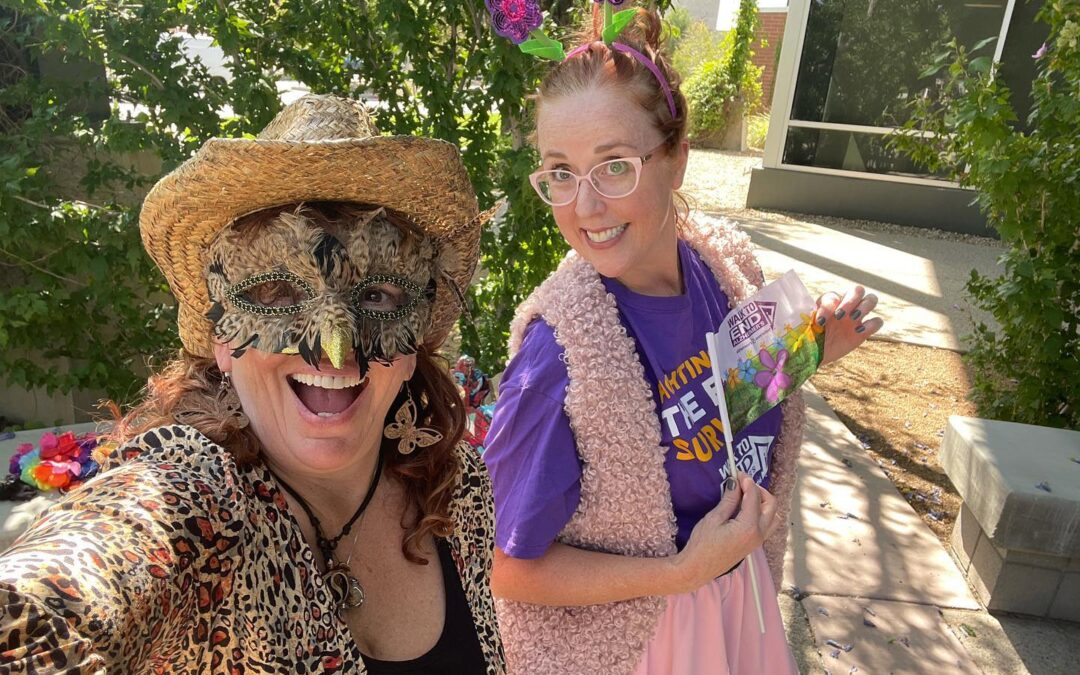We all have traditions that we keep, like making green bean casserole at Thanksgiving dinner, even though no one seems to enjoy it enough to serve it any other time of the year. Some traditions we continue because they are meaningful and personal. Every year since we moved here, we’ve taken part in the “Walk to End Alzheimer’s” each fall.
It snuck up on me this year, but I wouldn’t miss it for the world. We’ll be gathering in front of the library at Yavapai College next Saturday, Oct. 1 at 8:30 a.m. to meet up with friends, families, neighbors, and coworkers to walk together and raise funds to help find a cure for a disease that affects so many of us in the Quad Cities.
Alzheimer’s is probably what you think of most when you hear someone has dementia. I was at an event last week where Alexis Ramirez, Community Engagement Coordinator for the Northern Arizona regional office of the Alzheimer’s Association shared there are over 200 different types of dementia that have been diagnosed. She explained that like cancer, dementia is a general term for a disease with many specific variations. Some of the more well-known ones are Alzheimer’s, Lewy body, vascular, and even Parkinson’s, which surprised a few people in the audience.
She sent me current facts and figures that highlight why trying to find a cure for Alzheimer’s and other dementias is so important. More than 6 million Americans are living with dementia, and over 11 million people are providing unpaid care to their loved ones, a demanding job that can wear down even the strongest, most caring person. Dementia kills more people than breast cancer and prostate cancer combined. In the last 20 years, heart disease deaths have decreased by 7.3% but deaths from Alzheimer’s have increased 145%.
Statistics are interesting to think about, but I’m betting most of you reading this have a personal story about someone in your life who has had dementia. Maybe it was a spouse, a best friend, or your grandmother. Maybe it’s even one of your children – the age of diagnosis seems to be getting lower each year. If you’ve experienced it, you know firsthand what the statistics can never truly convey: it’s a disease that rips away the core part of the person you love, stealing all their memories of the life you had together and who you are to them.
This is why I sign up year after year for the Walk to End Alzheimer’s. I don’t want anyone else to have to lose a loved one to dementia. I know I am just one person and my contributions to the fundraising only make a tiny dent in what they need to find a cure. But I also know there are thousands of people, just like me, who walk because they believe even a few dollars can add up to make a huge difference.
It’s a tradition at the Walk for Alzheimer’s for each participant to receive a pinwheel flower to plant in the Memory Garden or carry with them on the walk. Orange means they are walking in support of finding a cure, yellow if they are caring for someone with the disease, blue if they have it themselves, or purple if they have lost a loved one to Alzheimer’s. One symbolic white flower is planted as the color for the first person to be cured.
Last year, as we were connecting with fellow walk participants, I noticed a bus unloading from a local memory care facility in town. Each participant received a blue flower, holding them up in the autumn sun, petals spinning in the wind as they lined up for the start of the walk, excited to join this special day and walk for a mission that is extremely personal to them.
Please walk with us if you can this Saturday. You don’t need a team or sponsors to join. Your presence alone makes a difference. Or visit www.alz.org to donate, start a team, register as a walker or find the support and resources you need if you or someone you love has dementia.

